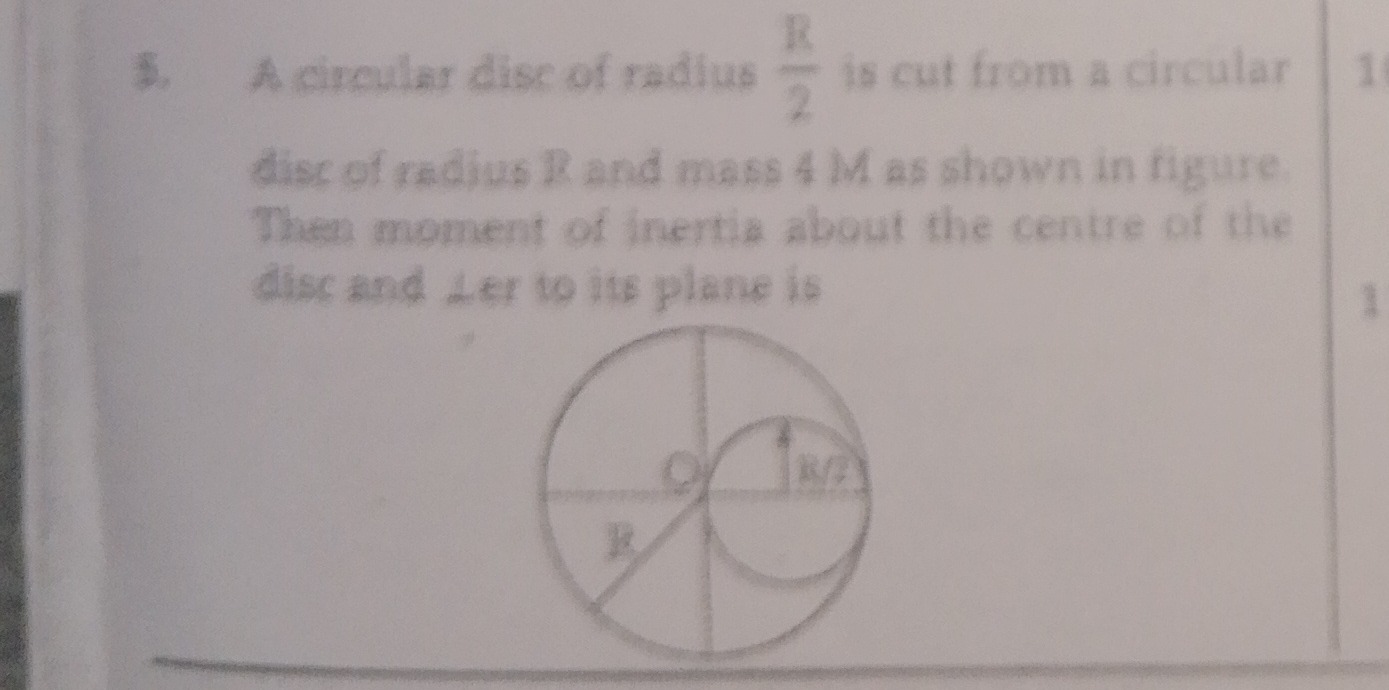Question
Question: A circular disc of radius $\frac{R}{2}$ is cut from a circular disc of radius R and mass 4M as shown...
A circular disc of radius 2R is cut from a circular disc of radius R and mass 4M as shown in figure. Then moment of inertia about the centre of the disc and ⊥er to its plane is

Answer
The moment of inertia is 813MR2.
Explanation
Solution
Solution
-
Original Disc:
- Mass = 4M, Radius = R
- Moment of inertia about its center: Ilarge=21(4M)R2=2MR2.
-
Cut-out Disc:
- Radius = 2R.
- Area density: σ=πR24M.
- Mass of cut-out: m=σ⋅π(2R)2=πR24M⋅π4R2=M.
- Its moment inertia about its own center: Icm=21m(2R)2=8MR2.
- The center of the cut-out is at a distance d=2R from the center of the large disc.
- Using the parallel axis theorem, its moment inertia about the large disc’s center: Icut=Icm+md2=8MR2+M(2R)2=8MR2+4MR2=83MR2.
-
Net Moment of Inertia:
Subtract the cut-out contribution from the original disc:
Inet=Ilarge−Icut=2MR2−83MR2=816MR2−3MR2=813MR2.
Explanation (Minimal Core):
- Total inertia of full disc: 2MR2.
- Cut-out (mass M) inertia about its own center: 8MR2; add offset inertia M(2R)2=4MR2 giving 83MR2.
- Subtract to yield 2MR2−83MR2=813MR2.
